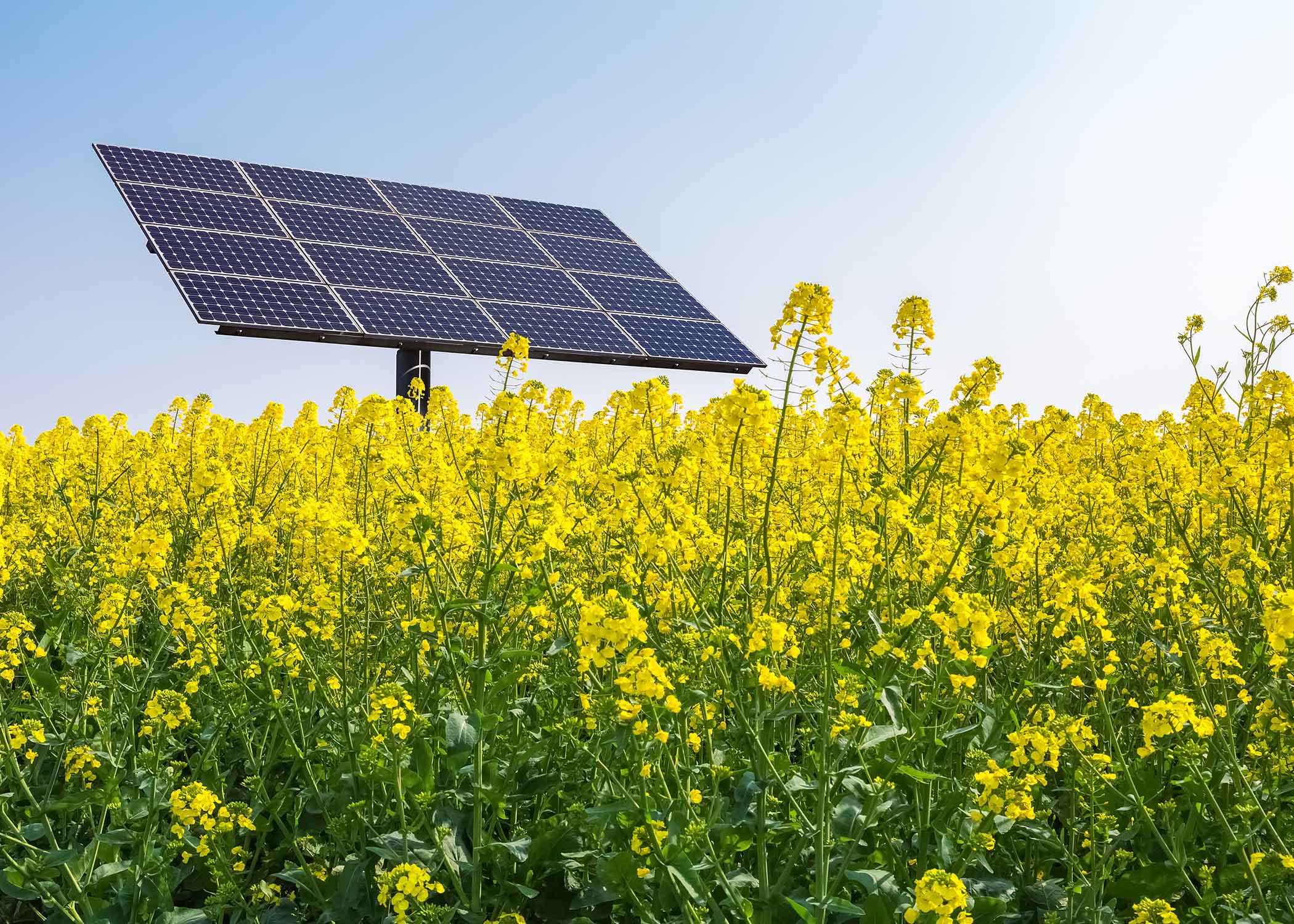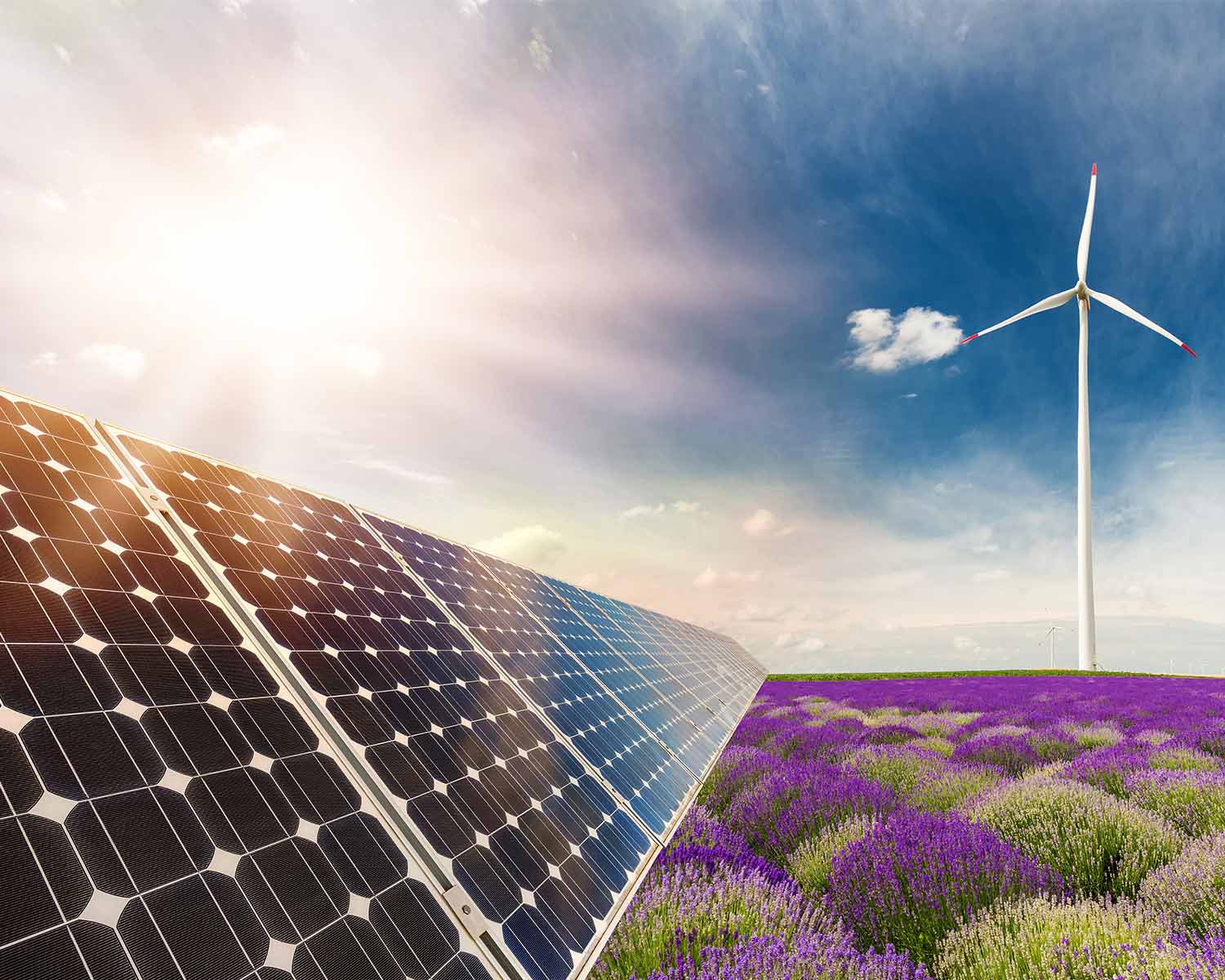Community Solar: An Overview
A community solar farm is a centralized solar system that provides power for a local community, often at a lower price than the utility company. Community solar programs are an excellent alternative for people who want to go solar, but can’t build a system on their own property.
What is Community Solar?
Not everyone is able to build a solar electric system on their property. That’s where community solar comes in.
A community solar system (often called a “solar farm” or “solar garden”) describes a central solar system that provides electricity to multiple members of a local community.
These systems serve apartment complexes, shopping malls, and other developments where property owners may not be able to put solar on their own property.
In short, a community solar farm is simply a solar power plant that sells electricity to local community members. People can choose to buy electricity from the solar farm as an alternative to buying power from the utility company, often at a lower cost.
How Does Community Solar Work?
- The developer builds a solar system that will generate enough electricity to meet the community’s energy needs.
- Community members sign a contract to buy power from the array.
- The energy they purchase from the community solar program is credited to their account with the utility company.
- Through virtual net metering, the customer’s energy usage is tracked by their meter. Their community solar credits offset their bill. If they go over their usage limit, they pay the difference to the utility company.
You might be wondering, “if I buy power from a solar farm, why does the utility company need to be involved?”
The answer is that community solar systems still use the utility grid to store the power they generate. And they deliver that power to customers via existing power lines, which are owned by the utility company.
Since these programs make use of the utility’s infrastructure, they work together to ensure the end-user’s energy usage is properly tracked and billed.
Community solar programs benefit from this agreement by keeping energy storage and distribution costs to a minimum, while utilities enjoy extra grid stability and generation capacity as a result of the solar array feeding into the grid.
It is truly a win-win situation for all sides—including the end-user, who pays less for their power bill at the end of the day.
Benefits of Community Solar
Low Initial Cost
Home solar systems require a large upfront investment to purchase outright. At the time of publication, a system designed to offset the average household energy use in the US costs around $9,000-$12,000 for the equipment alone (not including installation costs).
For those who aren’t in a position to invest that kind of money, community solar offers a way to go solar with no upfront cost. The owner of the community solar farm builds the system at their own expense. The customer simply signs up and starts paying a monthly bill, just like they would with the utility company.
Under this arrangement, they can immediately reap the rewards of lower energy bills and positive environmental impact, without having to shell out thousands of dollars upfront to buy the system.
Makes Solar More Accessible For Everyone
Not every property is suited for solar.
People who rent usually can’t go solar because their lease prevents them from making alterations to the property. Renters may not be allowed to build their own solar system, but they can still receive the benefits by joining a community solar program.
Even homeowners may find that their property isn’t right for solar, for a variety of reasons:
- Sub-optimal roof facing (rooftops should face South to maximize solar production; East or West also works)
- Trees, buildings, or other obstructions cast shade on the site, preventing sunlight from hitting the solar panels
- No suitable place to build—especially for urban properties, which may not have a rooftop or yard space that is large enough to build a system
- Restricted by HOAs, local building codes, or other governing bodies
If building a solar system on your property isn’t viable, opting into a community solar program is a great way to power your property with solar.
Maintenance-Free
Under a community solar program, you don’t have to worry about cleaning panels or replacing parts of the system on the system. That responsibility falls to the owner of the solar farm. You get to kick back and enjoy the benefits of solar power without having to worry about maintenance.
Drawbacks of Community Solar
Miss Out on Federal Tax Credit
The federal solar tax credit is a major financial incentive for people who invest in solar. In 2020, the credit offsets 26% of total project costs, in the form of a credit that offsets a portion of the federal taxes you owe to the IRS.
For an average-sized system, the solar tax credit puts a few thousand dollars back in the owner’s pocket, which drastically speeds up the ROI of the system.
Under a community solar plan, the owner of the solar farm gets to claim this credit. (Which makes sense—they bought the system, so they’re entitled to the credit.)
While community solar is useful if your property isn’t well-suited for solar, we’d encourage folks with solar-ready properties to consider buying your own system if you want to make the most of your investment.
Even if you take out a loan to finance your system, owning your own system is still a smarter investment than buying into a community solar program–thanks in no small part to programs like the solar tax credit.
Limited Return on Investment
In most cases, community solar farms are a business. The rates may be cheaper than utility power, but there still needs to be some markup so the owner can make a profit from their investment.
The developer is essentially a middleman who sources the equipment from a distributor, builds a system, and undercuts local utility costs while still turning a profit for themselves.
Of course, there’s nothing wrong with running a business. But homeowners should know that if their primary goal is to save money on energy bills, owning your own system is far more profitable than buying solar power from a third party.
We covered this topic in our article about solar leases and PPAs (power purchasing agreements). Leases and PPAs have a similar billing structure to community solar programs. The main difference is that leased systems are built on your property, while community solar systems are built at an external site.
Not available in all states
Community solar is made possible by virtual net metering programs, which are established by state policymakers.
These policies aren’t mandatory to establish a community solar program, but they certainly make them more appealing by offering benefits like tax exemptions to participants.
According to SEIA, 25 states have virtual net metering policies in place, but 40 states have at least one community solar program online. That suggests that community solar is viable even in states which haven’t set policies that actively encourage it.
Community Solar: The Verdict
So is community solar a good idea?
Generally, we love the idea because it makes solar more accessible to everyone. The Department of Energy suggests that roughly 50% of properties aren’t suitable for solar. Community solar gives those people access to the financial and environmental benefits of going solar, which is always a positive in our book.
However, we also recognize that solar can be quite a profitable investment, saving the owner (tens of) thousands of dollars in energy bills over the life of the system. If saving money is your primary reason for going solar, there’s no doubt that it’s much more valuable to own your system than lease it from a third party.
Our take: community solar gets more solar out into the world, and that’s a good thing. But if you have the means to buy your own system, that’s almost always a better investment in the long run.





